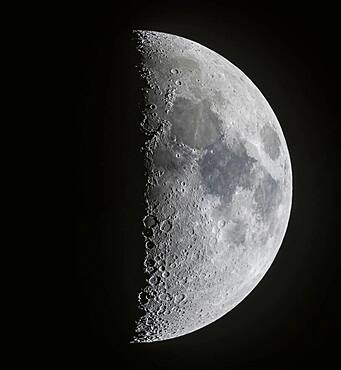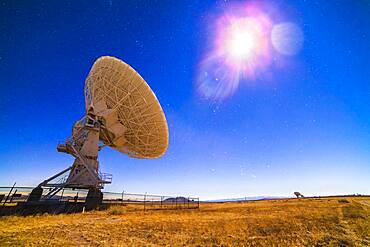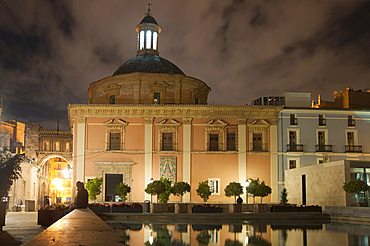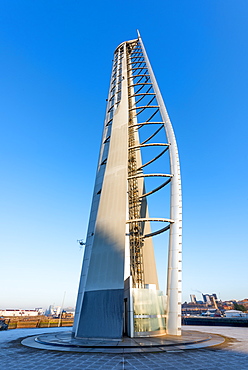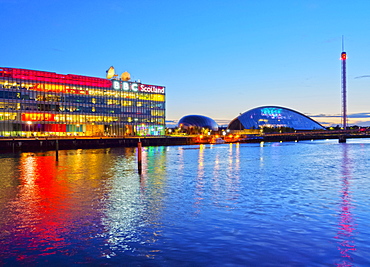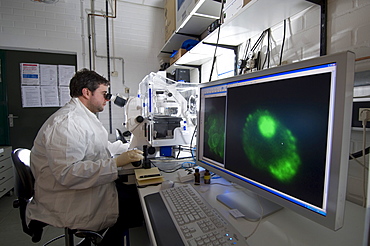Recent searches
Loading...
1245-2669 - City Centre Skyline and Palace of Culture and Science at dusk, elevated view, Warsaw, Masovian Voivodeship, Poland, Europe
1245-2666 - City Centre Skyline and Palace of Culture and Science, elevated view, Warsaw, Masovian Voivodeship, Poland, Europe
1245-2665 - Palace of Culture and Science and City Centre Skyline at dusk, elevated view, Warsaw, Masovian Voivodeship, Poland, Europe
1237-540 - Glasgow Science Centre, Glasgow, Scotland, United Kingdom, Europe
1237-535 - Glasgow Science Centre, Glasgow, Scotland, United Kingdom, Europe
1237-534 - Glasgow Tower and Science Centre, Cessnock Quay, Glasgow, Scotland, United Kingdom, Europe
1237-497 - Glasgow Tower, Science Centre, IMax, The Waverley, TS Queen Mary, River Clyde, Glasgow, Scotland, United Kingdom, Europe
1237-407 - T.S. Queen Mary, Glasgow Tower and Science Centre, River Clyde, Glasgow, Scotland, United Kingdom, Europe
1350-147 - Orion and the winter sky, at left, and a swirl of colourful aurora over the Churchill Northern Studies Centre, in a display on February 11, 2018. People from the first Learning Vacations group of the season are shooting the Lights.
1350-177 - The Dark Emu of aboriginal sky lore rising out of the Tasman Sea, from the south cost of Victoria, Australia. From Cape Conran on the Gippsland Coast. Carina is just above centre, Crux, the Southern Cross is at centre, and Centaurus is below Crux. The False Cross is at top.
1350-56 - This is the rich region in the centre of the constellation of Auriga with the Flaming Star Nebula, IC 405 at right, and the roundish IC 410 at bottom with the cluster NGC 1893. At top left is the star cluster Messier 38, with small NGC 1907 below it. The small nebula at left is IC 417 around the loose cluster Stock 8. The large elongated nebula at top is Sharpless 2-230. The colourful asterism of stars between IC 405 and IC 410 is the Leaping Minnow or Little Fish, aka Mel 31.
1350-83 - A panorama of the 7-day-old first quarter Moon on March 13, 2019, showing the full disk and extent of incredible detail along the terminator, the dividing line between the day and night sides of the Moon where the Sun is rising as seen from the surface of the Moon. Note the tiny points of light at the centres of some of the craters (particularly Alphonsus and Arzachel below centre) in the Southern Highlands from sunlight just catching the central peaks of those craters. At top in the north the slash of the Alpine Valley is obvious as well as the curve of the Apennine Mountains.
1350-48 - The 6.5-day-old Moon (approximately) with the Lunar X (below centre) and V (above centre) formations well lit on the terminator. This phase has an incredible amount of detail and variety of features visible along the terminator.
1350-146 - The galactic centre region of the Milky Way in Sagittarius setting behind Bow Glacier at the end of Bow Lake, in Banff National Park, Alberta.
1350-87 - A mosaic of the region in Cassiopeia and Cepheus containing the main nebulas: the Bubble Nebula (NGC 7635) at lower left, and the Cave Nebula (Sh 2-155) at upper right. At left is also the bright Messier open cluster M52. The small yellowish cluster at right is NGC 7419. The small cluster at lower centre is NGC 7510. The small nebula just left of centre is NGC 7538.
1350-2270 - View point of The Observatory Of Pic Du Midi De Bigorre, Hautes Pyrenees, Midi Pyrenees, France. The 12m Ponton dans le ciel, a glass walkway high above the Pyrenees at Pic du Midi de Bigorre, a 2877m mountain in the French Pyrenees, home to an astronomical observatory and visitors centre. The observatory is acccessible from the village of La Mongie by cablecar. Tourists often visit in time for the spectacular sunset across the mountains.
1350-128 - A mosaic of the rich region in Sagittarius and southern Serpens, from the Small Sagittarius Starcloud (Messier 24) at bottom to Messier 16, the Eagle Nebula, at top, with a fainter nebula above it around the cluster NGC 6604. At centre is the Swan or Omega Nebula, Messier 17. The dark nebula below centre is Barnard 92.
1350-27 - The nebulas of Orion in the Belt and Sword of Orion area. Including M42, Orion Nebula 9below centre), Barnard's Loop (at left), M78 (small reflection nebula above centre), Horsehead Nebula (centre) and NGC 2024 (above Horsehead). There is faint reflection nebulosity at right -- the frame does not extend right far enough to show the Witchhead Nebula near Rigel.
1350-45 - This is the central area of Cygnus and its bright Milky Way starcloud surrounded by red nebulosity. At left is the star Sadr (gamma Cygni) with the complex of nebulosity catalogued as IC 1318. At centre is the distinct Crescent Nebula, NGC 6888, a expanding nebula created by winds from a hot Wolf-Rayet star. At bottom left is the star cluster Messier 29, though looking a little lost in the rich starfields here. At top is the cluster IC 1311, looking more obvious than M29 but not observed visually and included in the NGC catalog. Odd. At far right are the large and loose star clusters NGC 6883 and NGC 6871, the latter an obvious binocular sight. To the left of Sadr is the small cluster NGC 6910. The dark nebulas B145 and LDN 862 are at right. The small emission nebula at bottom is Sharpless 2-104.
1350-100 - A dim aurora to the north at Grasslands National Park, Saskatchewan, at the Larson Ranch site and its rustic pioneer cabins. Taken August 8, 2016. This is looking northeast to Andromeda (the Andromeda Galaxy is above centre) and Perseus (the Double Cluster is left of centre). This Park is a Dark Sky Preserve. There are no lights visible. Illumination here is from starlight and the setting waxing crescent Moon to the southwest.
1350-71 - Photographer Stephen Bedingfield is shooting the Northern Lights at the Ramparts waterfalls on the Cameron River, September 8, 2019. The Big Dipper is at centre. The aspen trees are nicely turning colour.
1350-140 - The large star-forming region of IC 1396 in Cepheus, taken September 5, 2018 from home in southern Alberta. The wide field includes the bright orange star Mu Cephei, or Herschel's Garnet Star, at top. The Elephant Trunk Nebula is at centre. North is at top.
1350-133 - The amazing area of the southern Milky Way in Carina and Crux, the brightest part of the Milky Way after the galactic core region. At right is the Carina Nebula, with the Southern Pleiades cluster, IC 2602, below it. The Football Cluster, NGC 3532, is at upper left of the Carina Nebula. At centre is the region of Lambda Centauri, with the star cluster NGC 3766, the Pearl Cluster, above the emission nebulosity. At left is the Southern Cross, with the dark Coal Sack at bottom left of the Cross, with thin tendrils extending to the right. To the left of Alpha Cruxis at the bottom of the Cross is the star cluster NGC 4609; aboive Alpha is NGC 4649. To the left of Beta Cruxis at the left side of the Cross is the Jewel Box Cluster, NGC 4755.
1350-175 - Cygnus or the Northern Cross is setting amid the pine trees at Athabasca Falls in Jasper National Park, on a late October night. Cepheus is above and the bright star Vega is low and just above the trees. Deneb is at centre, as is the dark nebula Lynds 3, the Funnel Cloud Nebula. Light cloud adds the natural star glows but also discolours the sky near the horizon.
1350-135 - The colourful region around Antares in Scorpius, the yellow star at centre. To the right is the globular cluster Messier 4. Above right of Antares is the smaller globular NGC 6144. Above are the nebulas associated with Rho Ophiuchi. The area is filled with reflection (yellow and blue) and emission nebulas (red and pink). The field simulates a binocular field.
1350-139 - Curtains of aurora during an active storm on February 18, 2018 from the Churchill Northern Studies Centre, in the early evening in the last of the twilight. This night the aurora was brightest early in the evening. The Big Dipper is at left.
1350-41 - One of the 27 antennas of the Very Large Array (VLA) radio telescope complex in New Mexico (with others in the distance at lower right) illuminated by moonlight, on December 13, 2013, peak night for the Geminid meteor shower. A single exposure of 30 seconds with the Rokinon 14mm lens at f/2.8 and Canon 5D MkII at ISO 800. Orion is rising a lower centre. The Moon is the bright object at upper right. The Pleiades and Hyades are above centre.
1350-46 - The 6.5-day-old Moon (approximately) with the Lunar X (below centre) and V (above centre) formations well lit on the terminator. This phase has an incredible amount of detail and variety of features visible along the terminator.
1350-68 - The Northern Lights over the waterfalls known as the Ramparts on the Cameron River east of Yellowknife, NWT, on September 8, 2019. The aspen trees are turning yellow on this September evening. This is looking northeast toward Perseus and Andromeda. M31 is at top centre.
1350-59 - A wide-angle view of the Northern Hemisphere autumn Milky, from Aquila at bottom right in thw south, to Cassiopeia and Perseus at upper left in the northeast. Cygnus is at centre overhead on a late October evening. The Summer Triangle stars are at centre and right; the Andromeda Galaxy and Triangulum galaxies are at bottom left. The dark nebula Le Gentil 3, aka the Funnel Nebula, is at centre.
1350-166 - A swirl of aurora over the snow-covered trees of the boreal forest at the Churchill Northern Studies Centre, Churchill, Manitoba.
1350-58 - This is the nebula rich region in the constellation of Monoceros the Unicorn with the dark Cone Nebula (left of centre) and the small V-shaped and bright Hubble's Variable Nebula at bottom, a reflection nebula that varies in form and brightness. Above the Cone Nebula is the triangular Christmas Tree Cluster, NGC 2264, here upside down as the bright blue star 15 Mon is the base of the tree. The large region of nebulosity is Sharpless 2-273. The V-shaped dark nebula above centre is LDN 1603.
1350-2271 - View point of The Observatory Of Pic Du Midi De Bigorre, Hautes Pyrenees, Midi Pyrenees, France. The 12m Ponton dans le ciel, a glass walkway high above the Pyrenees at Pic du Midi de Bigorre, a 2877m mountain in the French Pyrenees, home to an astronomical observatory and visitors centre. The observatory is acccessible from the village of La Mongie by cablecar. Tourists often visit in time for the spectacular sunset across the mountains.
1350-2268 - View point of The Observatory Of Pic Du Midi De Bigorre, Hautes Pyrenees, Midi Pyrenees, France. The 12m Ponton dans le ciel, a glass walkway high above the Pyrenees at Pic du Midi de Bigorre, a 2877m mountain in the French Pyrenees, home to an astronomical observatory and visitors centre. The observatory is acccessible from the village of La Mongie by cablecar. Tourists often visit in time for the spectacular sunset across the mountains.
1350-172 - The centre of the Galaxy region in Sagittarius and Scorpius overhead in the wee hours of an April morning in Australia. At upper right are Alpha and Beta Centauri, while at lower left is Altair.
1350-109 - The rising autumn stars and constellations over and reflected in the lake at Police Outpost Provincial Park, in southern Alberta, on September 26, 2016. The stars of Auriga and Taurus are rising, including the Pleiades at upper right. Capella is the bright star above right centre; Aldebaran is below right in the sky. Both are reflected in the still water, along with the Hyades and Pleiades star clusters. A mild aurora is at left.
1350-2269 - View point of The Observatory Of Pic Du Midi De Bigorre, Hautes Pyrenees, Midi Pyrenees, France. The 12m Ponton dans le ciel, a glass walkway high above the Pyrenees at Pic du Midi de Bigorre, a 2877m mountain in the French Pyrenees, home to an astronomical observatory and visitors centre. The observatory is acccessible from the village of La Mongie by cablecar. Tourists often visit in time for the spectacular sunset across the mountains.
1350-47 - This is the Belt of Orion with its three blue stars across the top of the frame (L to R: Alnitak, Alnilam, and Mintaka), with the iconic Horsehead Nebula (aka B33) below Alnitak, with the dark Horsehead set against the bright nebula IC 434, aka Orion's Dagger. The pinkish nebula above Alnitak is NGC 2024, the Flame Nebula. The small blue reflection nebula left of the Horsehead is NGC 2023, with smaller IC 435 to the left of it. The field is filled with the large open cluster Collinder 70. The multiple star at bottom left of centre is Sigma Orionis. Many other smaller bits of reflection nebulas populate the field in and around the Belt.
1350-99 - The Northern Lights on Feb 16, 2015, as seen from the Churchill Northern Studies Centre, in Churchill, Manitoba at 58° latitude, and under the auroral oval. The aurora appeared as skies cleared somewhat during a blizzard with high winds and blowing snow conditions. I shot these from the second floor deck of the Centre, out of the wind and off the ground. Jupiter is at right, the Big Dipper at left.
1350-73 - Exiting the narrow Trollfjord by searchlight and under moonlight, on the northbound voyage of the Hurtigruten ferry ship the ms Trollfjord, on October 15, 2019. Capella is at top; Betelgeuse and Orion are rising at centre at the mouth of the fjord; Aldebaran is partly in cloud left of the Moon.
1350-12 - A mosaic of the region around the centre of the Milky Way in Sagittarius and Scorpius. The field takes in the Milky Way from the Cat's Paw Nebula at bottom edge to the Eagle Nebula at top left. In between from top to bottom are the Swan Nebula (M17), the Small Sagittarius Starcloud (M24), the Trifid and Lagoon Nebulas (M20 and M8) and the open clusters M6 and M7. The prominent dark nebula at right is the large Pipe Nebula (B78) with the small Snake Nebula (B72) above it. The whole complex is visible to the naked eye as the Dark Horse.
1350-49 - The large emission nebula IC 1805 in Cassiopeia, aka the Heart Nebula. The round nebula at top right is NGC 896. The large loose star cluster at centre is Mel 15; the star cluster at left is NGC 1027. The small cluster below NGC 896 is Tombaugh 4.
1350-13 - The centre of the galaxy area of the Milky Way toward Sagittarius and Scorpius, with the Sagittarius Starcloud right of centre, and the Lagoon Nebula (M8) left of centre. The Cat's Paw Nebula (NGC 6334) in Scorpius is at upper right, the Swan Nebula (M17) and Eagle Nebula (M16) are at lower left. To the right of them is the Small Sagittarius Starcloud (M24). At the very top is the Snake Nebula (B72). The main mass of dark nebula is the Pipe Nebula (B78). Above M24 at left is the open cluster M23 while below the M24 star cloud is the cluster M25. The globular M22 is at the bottom edge. At right of frame are the open clusters M6 (in the dark area of the Milky Way) and M7 (in the bright starcloud).
1350-101 - An aurora over the snowy boreal forest trees at the Chruchill Northern Studies Centre, Churchill, Manitoba, March 3, 2016. The display started the night quite impressively but then faded and subsided. This is a 10-second exposure a f/2 and ISO 3200 with the Nikon D750 and Sigma 20mm Art lens.
1350-137 - A horizon-to-zenith panorama of the winter consellations on a March evening as they set into the southwest. Orion is at bottom centre, with his Belt pointing down to Canis Major and up to Taurus. Gemini and Auriga are at top, in this case near the zenith overhead. The bright star clusters, M44, the Beehive, (at left) and M45, the Pleiades, (at right) flank the Milky Way. M45 is embedded in the Zodiacal Light. The star clusters M35 in Gemini and M41 in Canis Major are also visible as diffuse spots, as are several other star clusters. A couple of satellite trails are visible.
1350-11 - The Belt of Orion with the Horsehead Nebula at botton, the dark nebula set in the bright emission nebula IC 434. The nebula at left of the Zeta Orionis (aka Alnitak) is the Flame Nebula, NGC 2024. The reflection nebula at upper left is the M78 complex with NGC 2071. The other Belt stars are Alnilan (centre) and Mintaka (upper right). The field contains a wealth of other blue reflection and red emission nebulas.
1350-143 - Mars (at left) and the galactic centre area of the summer Milky Way low over the southern horizon at Writing-on-Stone Provincial Park, Alberta, on June 8/9, 2018. Sagittarus is at centre, with Scorpius at right. The Messier 6 and 7 open star clusters are just above the horizon at centre, just right of the Sweetgrass Hills on the horizon in Montana.
1113-103141 - Illuminated Television Tower at night, Berlin, Germany
1237-392 - Science Centre, Glasgow Tower, PS Waverley, River Clyde, Glasgow, Scotland, United Kingdom, Europe
1237-361 - Glasgow Tower, Science Centre, Glasgow, Scotland, United Kingdom, Europe
1104-1809 - W5 Science and Discovery Centre reflecting in Belfast Harbour Marina, Belfast, Ulster, Northern Ireland, United Kingdom, Europe
1176-1207 - The Francis Crick Institute biomedical research centre, with St. Pancras railway station in the background, King's Cross, London, England, United Kingdom, Europe
746-89148 - Passaje de Emili Aparicio Olmos, Plaza de Almojna, Valencia, Spain, Europe
746-89169 - Post Building, Plaça de lAjuntament, Valencia, Spain, Europe
746-89143 - Passaje de Emili Aparicio Olmos, Basilica de la Mare de Deu, Plaza de Almojna, Valencia, Spain, Europe
746-89147 - Plaza de Almojna, Valencia, Spain, Europe
746-89170 - Plaça de lAjuntament, Valencia, Spain, Europe
746-89149 - Basilica de la Mare de Deu, Plaza de Almojna, Valencia, Spain, Europe
746-89145 - Basilica de la Mare de Deu, Plaza de Almojna, Valencia, Spain, Europe
746-89165 - Post Building, Plaça de lAjuntament, Valencia, Spain, Europe
746-89144 - Basilica de la Mare de Deu, Plaza de Almojna, Valencia, Spain, Europe
746-89171 - Plaça de lAjuntament, Valencia, Spain, Europe
746-89146 - Plaza de Almojna, Valencia, Spain, Europe
746-89150 - Basilica de la Mare de Deu, Plaza de Almojna, Valencia, Spain, Europe
1116-43319 - Science World at Telus World of Science, Vancouver, British Columbia, Canada
1297-906 - Copernicus Science Centre, Warsaw, Poland, Europe
851-909 - NEMO Museum, a science centre in Amsterdam, North Holland, The Netherlands, Europe
1207-368 - Couple looking at Palace of Culture and Science and skyscrapers, City Centre, Warsaw, Poland, Europe
1207-367 - Couple looking at Palace of Culture and Science and skyscrapers, City Centre, Warsaw, Poland, Europe
1207-369 - Palace of Culture and Science, City Centre, Warsaw, Poland, Europe
1207-357 - Palace of Culture and Science, City Centre, Warsaw, Poland, Europe
1207-351 - Palace of Culture and Science, City Centre, Warsaw, Poland, Europe
1207-355 - Palace of Culture and Science, City Centre, Warsaw, Poland, Europe
1207-350 - Palace of Culture and Science, City Centre, Warsaw, Poland, Europe
1216-225 - Glasgow Science Centre Tower, Pacific Quay, Glasgow, Scotland, United Kingdom, Europe
1237-138 - Globe of Science and Innovation, CERN, Geneva, Switzerland, Europe
1167-1561 - Puffin, Alaska Sealife Centre, Coldwater Marine Science Facility, Seward, Resurrection Bay, Kenai Peninsula, Alaska, United States of America, North America
1245-364 - Skyscrapers with Palace of Culture and Science, City Centre, Warsaw, Masovian Voivodeship, Poland, Europe
1245-314 - Palace of Culture and Science, City Centre, Warsaw, Masovian Voivodeship, Poland, Europe
1245-266 - Twilight view of the BBC Scotland and the Glasgow Science Centre, Glasgow, Scotland, United Kingdom, Europe
800-2819 - Science Centre NEMO in Oosterdok (East Dock), Amsterdam, Netherlands, Europe
797-11626 - Spain, Valencia Province, Valencia, Spain, Valencia Province, Valencia, La Ciudad de las Artes y las Ciencias, City of Arts and Sciences, Palau de les Arts Reina Sofa, Opera house and cultural centre.
797-11627 - Spain, Valencia Province, Valencia, La Ciudad de las Artes y las Ciencias, City of Arts and Sciences, Palau de les Arts Reina Sofa, Opera house and cultural centre.
797-11628 - Spain, Valencia Province, Valencia, Spain, Valencia Province, Valencia, La Ciudad de las Artes y las Ciencias, City of Arts and Sciences, Palau de les Arts Reina Sofa, Opera house and cultural centre.
832-372193 - Stem cell research, Max Planck Institute for Molecular Genetics, scientist, laboratory technician cultivating stem-cells, Berlin, Germany
832-372194 - Stem cell research, Max Planck Institute for Molecular Genetics, laboratory technician observing nerve cells through a microscope, Berlin, Germany
832-372195 - Stem cell research, Max Planck Institute for Molecular Genetics, laboratory technician observing nerve cells through a microscope, Berlin, Germany
832-341332 - Stem cell research, Max Planck Institute for Molecular Genetics, scientist, cultivation of tumor stem-cells, Berlin, Germany
832-314480 - ESP, Spain, Valencia : Ciudad de las Artes Y de las Ciencias, City of arts and sciences. L'Hemisferic and Palau de les Arts Reina Sofia, concert, theatre hall
832-314516 - ESP, Spain, Valencia : Ciudad de las Artes Y de las Ciencias, City of arts and sciences. L'Hemisferic and Palau de les Arts Reina Sofia
832-314472 - ESP, Spain, Valencia : Ciudad de las Artes Y de las Ciencias, City of arts and sciences. Palau de les Arts Reina Sofia
832-314523 - ESP, Spain, Valencia : Ciudad de las Artes Y de las Ciencias, City of arts and sciences. L'Hemisferic, Palau de les Arts Reina Sofia and Museo de las Ciencias Principe Filipe
832-314497 - ESP, Spain, Valencia : Ciudad de las Artes Y de las Ciencias, City of arts and sciences. L'Hemisferic and Palau de les Arts Reina Sofia, concert, theatre hall
832-314518 - ESP, Spain, Valencia : Ciudad de las Artes Y de las Ciencias, City of arts and sciences. L'Hemisferic and Palau de les Arts Reina Sofia
832-314490 - ESP, Spain, Valencia : Ciudad de las Artes Y de las Ciencias, City of arts and sciences. Palau de les Arts Reina Sofia
832-314512 - ESP, Spain, Valencia : Ciudad de las Artes Y de las Ciencias, City of arts and sciences. Palau de les Arts Reina Sofia.
832-314507 - ESP, Spain, Valencia : Ciudad de las Artes Y de las Ciencias, City of arts and sciences. L'Hemisferic, Palau de les Arts Reina Sofia, Museo de las Ciencias Principe Felipe
832-314496 - ESP, Spain, Valencia : Ciudad de las Artes Y de las Ciencias, City of arts and sciences. L'Hemisferic and Palau de les Arts Reina Sofia, concert, theatre hall
832-314517 - ESP, Spain, Valencia : Ciudad de las Artes Y de las Ciencias, City of arts and sciences. L'Hemisferic and Palau de les Arts Reina Sofia
832-314521 - ESP, Spain, Valencia : Ciudad de las Artes Y de las Ciencias, City of arts and sciences. L'Hemisferic and Palau de les Arts Reina Sofia











